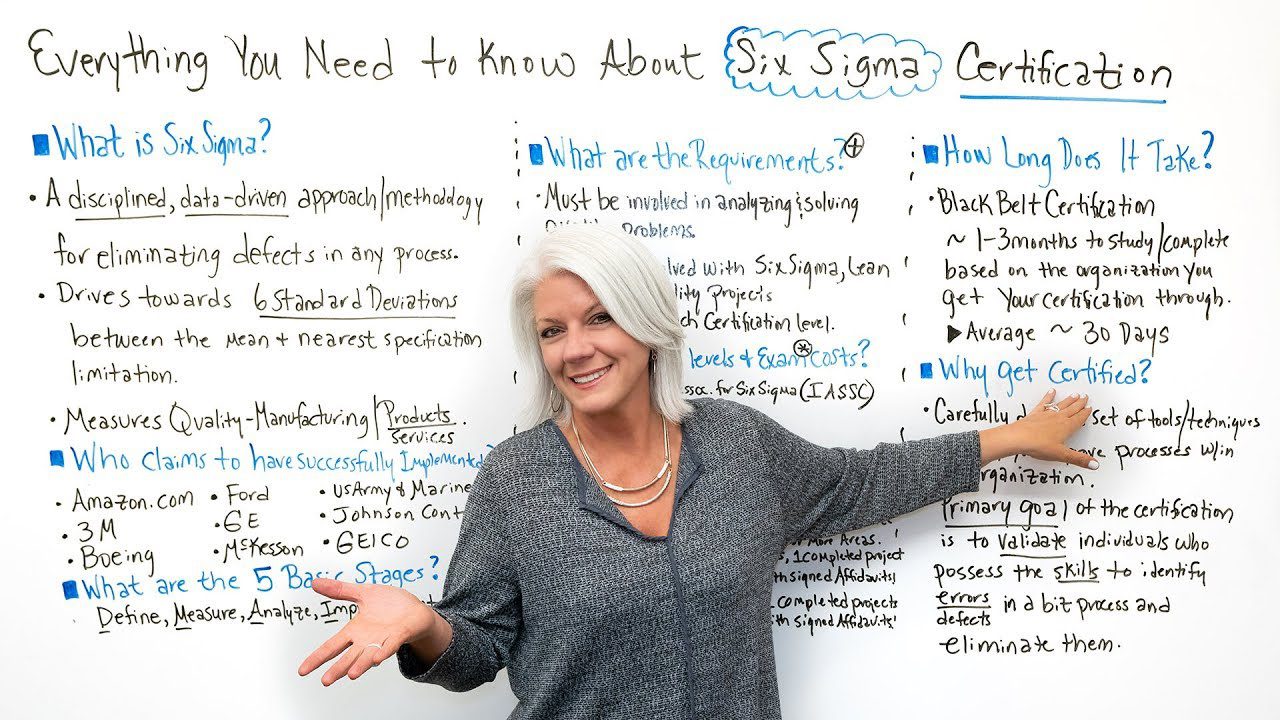Six Sigma is a method for improving processes and managing quality that is structured around the collection and analysis of data. Its purpose is to locate and get rid of errors, cut down on variability, and boost the overall performance of the business. By making use of statistical analysis and measurement techniques, Although it can be difficult to find a completely free and comprehensive Six Sigma course, there are some resources that offer free introductory materials. Searching the internet for “Six free Sigma course” will also turn up results for free eBooks and whitepapers related to the methodology. Nevertheless, if you want an official certification, you should consider enrolling in a training programme that is both recognised and accredited.
Organizations can improve their operational efficiency, customer satisfaction, and profitability by utilising the structured framework that Six Sigma provides for them. To identify problem areas, measure performance metrics, analyse root causes, implement improvements, and establish control mechanisms to sustain the gains, the methodology follows a defined set of steps known as DMAIC (Define, Measure, Analyze, Improve, and Control). In order to achieve continuous improvement and provide high-quality goods and services, Six Sigma places a strong emphasis on putting the needs of the customer first, encouraging employee participation, and basing decisions on empirical evidence.
To become certified in Six Sigma, you must first complete the following steps in general:
Gain an understanding of Six Sigma by becoming acquainted with its fundamentals, methodologies, and numerous practical applications. Acquire a thorough comprehension of how it can be applied to the process of quality management and process improvement.
Determine Which Level of Certification You Want to Achieve First, Determine Which Level of Six Sigma Certification You Want to Achieve, Whether It Be Yellow Belt, Green Belt, Black Belt, or Master Black Belt. Each level has its own unique set of requirements, and its emphasis is placed on a different level of expertise.
Choose a Certification Body:
Do some research to find a reputable certification body that offers Six Sigma certifications, and then select one of those bodies. The American Society for Quality (ASQ) and the International Association for Six Sigma Certification are two notable examples (IASSC).
Check to see if the certification programme has any prerequisites, which could include educational qualifications or previous work experience. If it does, you will need to fulfil those prerequisites. Make sure that you check off all of these requirements for the certification level that you’ve chosen.
Enroll in a Training Program:
It is recommended that you enroll in a Six Sigma training programme that corresponds to the certification level that you have chosen. These programmes give participants an in-depth understanding of the methodologies, tools, and techniques used in Six Sigma. See what Simplilearn’s students say about their favorite courses and upskilling journeys. Get tips on how to best use the course material and other resources.
Participate in the Training Program and Complete the Required Coursework:
In order to successfully complete this requirement, you will first need to participate in the training programme. In order to gain practical experience, this may require attendance at lectures, workshops, and other types of hands-on activities.
Take and Pass the Certification Exam: After completing the training programme, you will be required to take and pass a certification exam to demonstrate that you understand the principles and methodologies of the Six Sigma quality management system. The format of the examination as well as the requirements for passing may be different for each certification body.
Obtain Work Experience (if applicable): Certain certification programmes may require a certain amount of practical work experience in the application of Six Sigma methodologies prior to enrolling in the programme. Participating in Six Sigma projects within your organisation or taking advantage of opportunities to volunteer are both great ways to build up your relevant work experience.
Maintain Certification (if Applicable): Certain certification bodies require you to maintain your certification by either earning continuing education units (CEUs) or participating in ongoing professional development activities. In order to comply with this requirement, you must either earn CEUs or participate in ongoing professional development activities. Maintaining your active certification will require that you remain knowledgeable about the specific requirements. Self-Study Materials and Online Resources: In addition to participating in formal training programmes, individuals interested in learning Six Sigma can access a variety of self-study materials and online resources. You can supplement your knowledge and prepare for the certification exam by using the tutorials, case studies, and practise exercises that are provided on the websites, blogs, and forums that are dedicated to Six Sigma.
Participation in Projects: Participating in Six Sigma projects is an excellent way to gain practical experience and put the concepts you learn into practise. Look for ways to advance your career within the company you currently work for, or search for volunteer opportunities in the community. Not only will this practical experience help you better understand the material, but it will also provide you with useful examples that you can discuss with the certification examiners.
Establishing Professional Connections: Make contact with other experts working in the Six Sigma field. Going to industry events, becoming a member of online communities, and taking part in discussion forums are all great ways to network with seasoned professionals. Participating in activities with other people working in the same field can provide useful information, direction, and even possible opportunities for mentoring.
Questions Taken From Previous Exams: In order to get ready for the certification test, you should practise answering sample questions and take previous exams. This will help you become more familiar with the format of the exam, the time constraints, as well as the different types of questions that you may be asked. Exams for practise are frequently offered as part of training programmes, and they are also available in study guides and various online resources.
Continuous Education: Because Six Sigma is an ever-evolving field, it is essential to continually educate oneself on the most recent industry trends, methodologies, and best practises. Read books, journals, and other publications geared toward your industry in order to maintain a state of continuous learning. Participate in online webinars, skill-building workshops, and seminars to increase your knowledge and capabilities beyond what is required for certification. Consider Certifications Tailored to Your Industry Depending on the nature of your business, there may be specialised Six Sigma certifications available. These certifications may concentrate on particular applications or industries. These certifications that are specific to the industry can lend additional credibility and demonstrate expertise in resolving problems that are unique to the industry.
Transferable Skills: The knowledge and abilities attained through obtaining a Six Sigma certification are applicable to a wide variety of fields and can be helpful in a number of different positions. In order to demonstrate that you have the ability to drive process improvements and deliver tangible results, be sure to highlight these skills both on your resume and during job interviews.
To summarise
Keep in mind that in order to become certified in Six Sigma, you will need to dedicate yourself, make a commitment, and continue to educate yourself. You can improve your understanding of Six Sigma methodologies and your skills by engaging in a variety of learning activities, including self-study, networking, formal training, and practical experience.

































